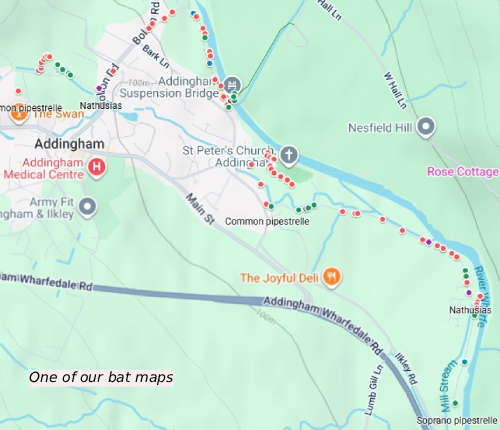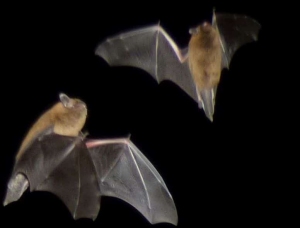Bats
 Our bat group records sightings in the village, identifies species, and maps their distribution as in the example on this page. Here are the village bat maps so far.
Our bat group records sightings in the village, identifies species, and maps their distribution as in the example on this page. Here are the village bat maps so far.
If you would like to accompany the regular observers on their transect walks (monthly April – October) then please contact Sylvia Kenny using the form on this page.
We also have occasional general interest evening bat walks, including for Saplings - the children’s environment group.
We are keen to find bat roosts in the village where they overwinter and spend their daylight hours during their active season.
Please let Sylvia Kenny know if you think that you have found a roost by using the form on this page. Bats do not make nests, but choose various places throughout the year to roost. They roost in houses, both new and old but some species prefer hollow trees, or caves. In buildings they often shelter behind hanging tiles and boarding or in roof spaces.
Bats do not make nests, but choose various places throughout the year to roost. They roost in houses, both new and old but some species prefer hollow trees, or caves. In buildings they often shelter behind hanging tiles and boarding or in roof spaces.
To find a bat roost, look for signs like droppings on window sills, walls, or in a roof void, especially near gable ends, bargeboards, or soffits. You can also listen for chattering sounds, or watch the building at dusk for bats emerging to fly out. Common roosts are in buildings, trees, and underground sites, and specific species prefer certain locations, like pipistrelles in houses or brown long-eared bats in roof voids.
For more information about bats see at https://www.bats.org.uk/
You might also be interested in this Wharfedale Naturalists Society presentation on Bats.

